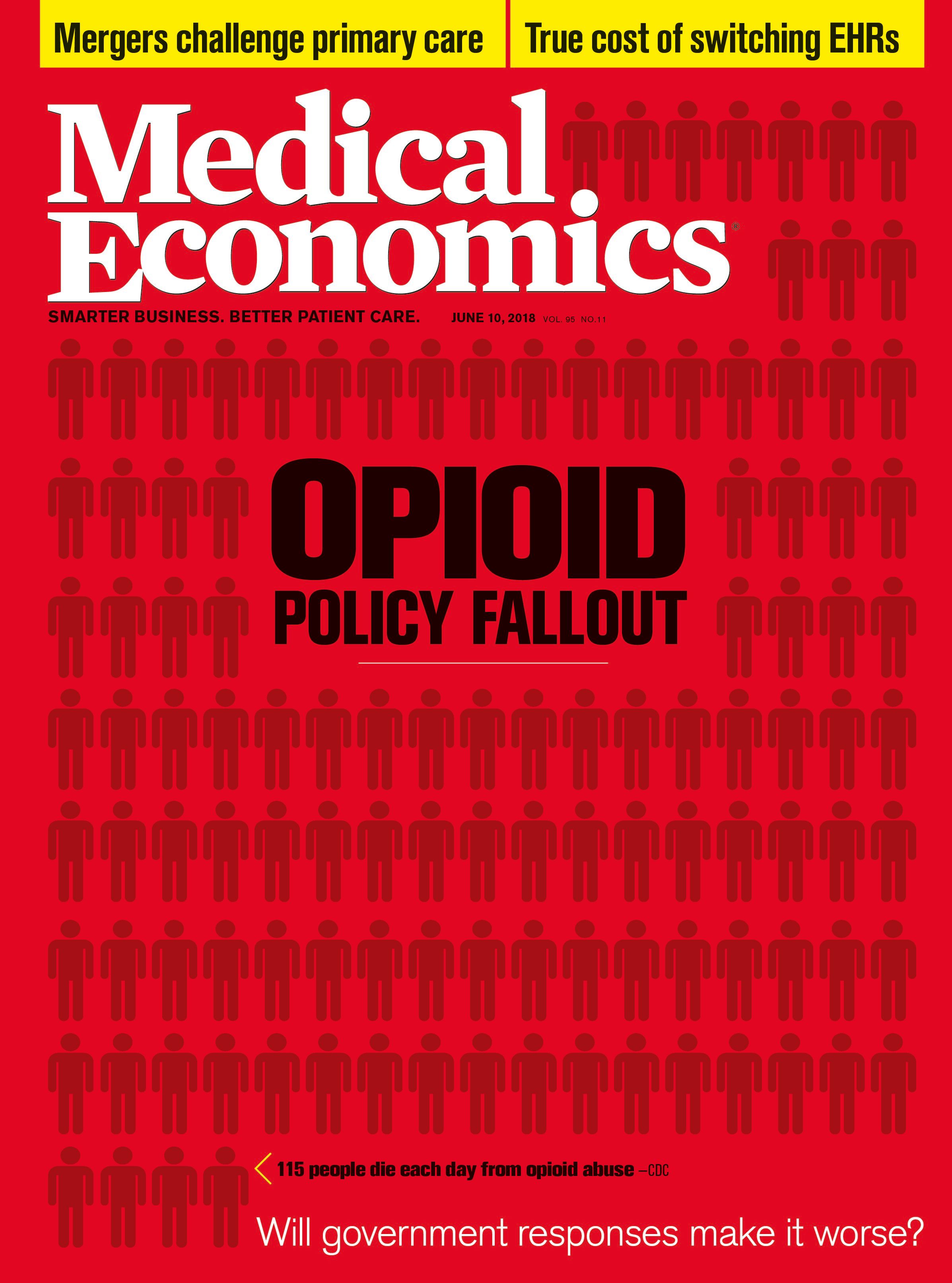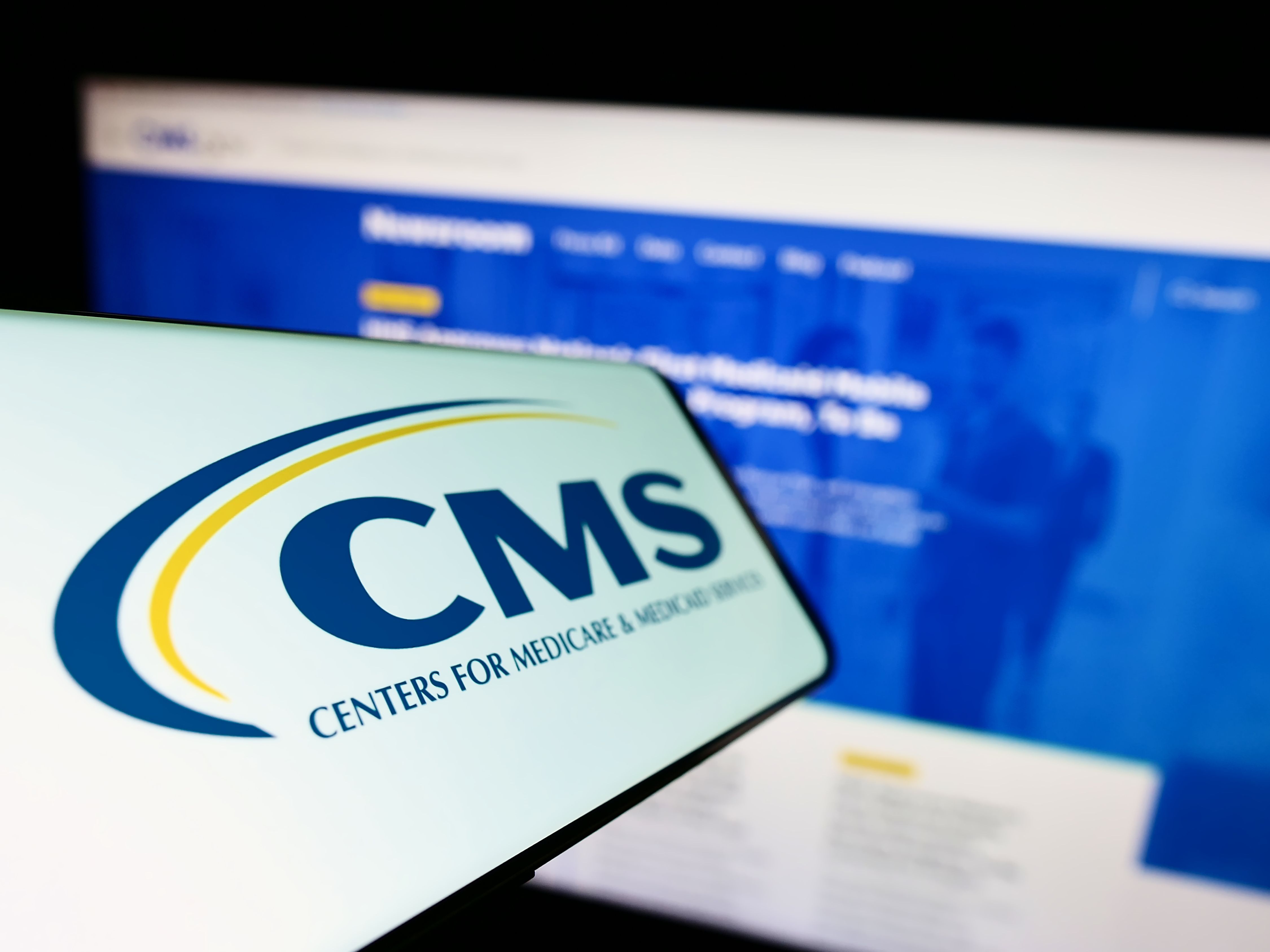Publication
Article
Medical Economics Journal
Opioid policy fallout
Author(s):
Will government ‘solutions’ to the opioid crisis make it worse?
The epidemic of opioid-related deaths sweeping the country has lawmakers and regulators in Washington, D.C., and state capitals scrambling for answers. And while doctors generally welcome the attention to the crisis, many also fear that the solutions being proposed and enacted will do more harm than good.
The concern among physicians and public health and pain management experts is that laws and regulations designed to limit use of prescription narcotics, however well-intentioned, are yet another constraint on doctors’ ability to treat patients as they think best.
Worse, they say, some of the limitations on prescribing could result in patients turning to heroin or buying the medications on the street. And because heroin in particular now is often laced with fentanyl and other synthetic painkillers, doing so astronomically increases the risk of death.
Balancing needs of patients versus the community
Still, nearly everyone agrees that the staggering death toll from opioids-now around 115 people each day, according to the CDC-needs to be reduced.
That responsibility often falls to primary care doctors, who write about half of the nation’s opioid prescriptions, according to the CDC. It also leaves them to grapple with the question voiced by Alan Schwartzstein, MD, a primary care physician in Oregon, Wisc.: “How do we provide patients with adequate management of their chronic pain without having medications that could be a danger to themselves or others out in the community?”
While opioid-related deaths have been rising for well over a decade, government efforts to address the crisis only got underway in earnest in 2016. That’s when the CDC issued its comprehensive “Guideline for Prescribing Opioids for Comprehensive Pain,” and President Obama signed into law the “Comprehensive Addiction and Recovery Act of 2016.”
Around the same time, state legislatures began considering-and in some cases adopting-laws aimed at curbing opioid abuse. As of July 2017, 23 states had passed legislation with some type of guidance, limit, or requirement related to opioid prescribing, according to the National Council of State Legislatures.
Most of the state laws limit first-time opioid prescriptions to a set number of days, ranging from three to 14. Many also mandate that doctors consult their state’s Physician Drug Monitoring Program (PDMP) before writing an opioid prescription, to ensure that the patient isn’t getting medications from multiple prescribers.
Opposition to new CMS Rule
The most recent action aimed at reducing opioid use occurred in April of this year, when CMS approved a rule denying coverage (with some exceptions) for Medicare Part D beneficiaries whose total daily opioid dose exceeds 90 morphine milligram equivalents (MMEs). The rule also limits coverage for patients receiving opioids for the first time to a seven-day supply, with no exceptions.
The rule generated significant opposition from physicians and pain experts, dozens of whom signed a letter stating, among other objections, that the policy isn’t consistent with the CDC guideline, and it doesn’t include any metrics for evaluating the rule’s impact on patient health or access to care.
Among the letter’s signatories was Thomas Tape, MD, MACP, professor of internal medicine at the University of Nebraska Medical Center, and a member of the core group of experts that advised the CDC in developing its opioid guidelines. “I’m a firm believer of guidelines in terms of information to physicians regarding the hazards of high-dose opioid prescribing,” Tape explains. “But at the same time, physicians need to be allowed to exercise their clinical judgement about the appropriate course of therapy for a particular patient without interference from governmental entities, because there are so many exceptions to any general rule.”
Tape, who maintains a clinical practice, distinguishes between what he calls “legacy patients”-those who have been on high doses of opioids for months or years-and patients who’ve been prescribed opioids more recently and are still on relatively low doses. One of the goals of the CDC guideline and subsequent laws and regulations, he says, is to ensure that patients in the latter group don’t become part of the high-dose group.
“But we also have to recognize there are no easy answers for dealing with that high-dose legacy group,” he adds. “You can’t just make the problem go away by saying we won’t pay for that kind of [high-dose] prescribing anymore, because that throws patients into a state of withdrawal.”
Like Tape, Schwartzstein believes that getting patients off opioids, or just lowering their dosages, is a difficult process that has to be tailored to each patient’s needs. “My primary goal is to manage chronic pain so that people can be as functional as possible, so I don’t take opioid pills away from people just for the sake of taking them away. It’s all based on an individual assessment between myself and the patient,” he says.
Wisconsin, where Schwartzstein practices, has no limitations on the quantity of opioids a physician can prescribe, but it does require prescribers to take two hours of continuing medical education on the topic, and to consult the state’s PDMP if they write a prescription for more than three days’ worth of the medications.
Even so, Schwartzstein says, he has changed his approach to opioids over the last few years as their danger has become more apparent. For patients experiencing acute pain, he now generally prescribes a three- to seven-day supply, whereas before he would prescribe for up to 14 days.
For patients with chronic pain, Schwartzstein first tries to address it with non-pharmaceutical solutions-exercise and physical therapy-and/or non-opioid medications. “If I do start prescribing opioids, it’s only after a careful discussion about the benefits and risks, either for the patient or others who might potentially access them,” he says. He also requires patients to sign a contract under which they agree to get prescriptions only from him, to get the prescriptions filled at a designated pharmacy, and undergo periodic urine screenings.
Growing ‘opioid phobia’
For Dan Glatt, MD, an internist in Burlingame, Calif., specializing in pain and addiction medicine, obstacles to prescribing opioids have come not from any new laws or regulations, but from payers.
He cites the case of two patients who’ve been stable on their medications for several years, but whose insurance (which they get through their spouses who both work for the same employer) recently began limiting its opioid coverage to 90 MME per day, far less than the patients had been using. Now, Glatt says, the patients are having to pay out-of-pocket for their pain medications.
“It puts unnecessary stress on the patients and thereby on their spouses who are the actual employees and who are afraid to complain about the situation because they don’t want to lose their jobs,” he says.
In addition, Glatt notes that a growing number of physicians in his region now refer patients to him out of what he calls “opioid phobia.”
“Docs who were prescribing now are afraid to because they don’t want to show up on a list or think the DEA is going to show up at their door,” he says. “They either want a blessing from me because they know I treat addiction and pain, or they just don’t want to take care of these patients anymore, even though the patient’s doing fine and has been stable on their meds for years.”
Like many specialists in addiction medicine, Glatt believes the solution to the opioid crisis lies in devoting more resources to helping addicts and keeping outside interference to a minimum. “It gets more and more frustrating to practice clinical [addiction] medicine when nonclinicians are telling us how to prescribe,” he says. As for what would help, he cites the need for more detox services and for medically assisted treatments, such as opiate blockade and replacement therapies.
Burdens on practice
Georgia, where internist Sandra Fryhofer, MD, MACP practices, recently enacted several laws aimed at curbing opioid abuse.
Beginning July 1, physicians who are licensed to prescribe the medications must register with the state’s PDMP, check the database when they first prescribe a controlled substance for a patient and every 90 days thereafter (and document that they’ve done so), inform patients about the addictive properties of opioids before prescribing them, and take at least three hours of CME on safe opioid prescribing before receiving or renewing their medical license.
The law allows practices to assign up to two staff members to check the PDMP, thereby relieving physicians of some of the time required. Even so, “It’s going to be a burden because everyone is already busy in a small primary care office,” she says, adding that the process would be easier if the PDMP could be integrated into electronic health records. On the other hand, “It’s not too much to ask if we can save a life,” she adds.
The Medical Association of Georgia also lobbied unsuccessfully for a law that would have required commercial insurers in the state to provide coverage for opioid addiction treatments and opioid alternative treatments for patients. “All these things are ways that we could keep from having to give patients pain pills,” she says.
Fryhofer adds that the law’s failure is emblematic of a larger problem: Too few lawmakers, regulators and payers involved in trying to solve the opioid crisis truly understand its complexities or the resources the effort requires. “But they do understand we have a deadly epidemic on our hands that continues to claim more and more lives and something has to be done to stop it,” she says. “And they know that a lot of the cycle of opioid prescribing begins with clinicians, so they want to make us part of the solution.”
Tips for opioid prescribing
With all the legislative and regulatory efforts to reduce opioid use, can primary care doctors still prescribe the medications without running afoul of the law? The answer is “yes,” but experts caution that it takes work.
“If you choose to prescribe opioids for patients, the most important thing is to have properly documented records,” says Dan Glatt, MD, an internist and partner in a pain and addiction practice in Burlingame, Calif. Documentation should include the patient’s medical history and physical exam, the rationale for prescribing opioids, and discussion of the risks and benefits. In addition, doctors need to consult their state’s Physician Drug Monitoring Program-and document they have done so-to ensure against duplicate prescribing, and administer random urine tests. “Doing these things is the only way to be safe with prescribing,” he says.
Anna Lembke, MD, medical director for addiction medicine at the Stanford University School of Medicine, also stresses the importance of documentation, along with determining if the patient has a history of addiction or substance abuse. “The ‘don’t ask, don’t tell’ approach [towards opioids] that many doctors had been using for decades is no longer acceptable,” she says. “Now we know what the risks are and there’s no longer any excuse not to ask about it and monitor for it.”
The case for outside intervention
Anna Lembke, MD, knows that where government regulation of opioid prescribing is concerned, she is an outlier. While most doctors resist any limits on their ability to treat patients as they think best, Lembke thinks that reducing opioid use requires intervention by legislators and other outsiders.
Lembke’s willingness to accept government-imposed limits on opioid prescribing is based on the need to counter what she calls “perverse incentives” in the nation’s healthcare system to overprescribe the medications, as demonstrated by the fact that as of 2015 American physicians were prescribinig three times more opioids than in 1999, and nearly four times more than their European counterparts, , according to a 2017 JAMA article.
Among these incentives, she says, is the influence that pharmaceutical manufacturers have wielded, and continue to wield, over organizations and agencies meant to protect patients and advocate on their behalf. She points to a March 2018 draft report to the director of the National Institutes of Health recommending, among other actions, that the institute no longer accept funding for public/private partnerships from pharmaceutical companies involved in opioid-related litigation.
The growing number of physicians leaving private practice to work for hospital systems creates another reason for doctors to overprescribe opioids, she says. “Employed doctors are under enormous pressure to see patients quickly and to get good patient satisfaction scores because those can impact professional advancement,” she says. “Opioids work really well to address those needs, at least in the short-term, so prescribing them is the easy thing to do.”
Still another factor favoring opioid prescribing, Lembke says, is Americans’ attitude towards pain. “In general, I think the cultural trend is toward the belief that any amount of pain is too much,” she says. And while that attitude stems from a variety of causes, the pharmaceutical industry promotes it. “Their attitude is, ‘If you’re experiencing any pain, you have an illness and your doctor has a responsibility to treat that,’” she says.
Given all the incentives in favor of opioid prescribing, Lembke says, “I think there needs to be external controls, because left to their own devices doctors won’t be able to limit their prescribing to the extent necessary to impact this public health crisis.”






